Gluteus Medius Exercises That Actually Work!

Do you want to tone your gluteus medius? Gluteus medius exercises are a great way to strengthen and tone this muscle. This muscle is one of the most critical muscles in the body, so we must take care of it.
Please read our blog post on the best gluteus medius exercises for more information.
What is the gluteus medius muscle?
The gluteus medius is one of the three main Gluteal muscles. It attaches at the iliac crest and goes across the hip joint downward to insert onto the outer surface of the greater trochanter (the outer portion of the thigh).
It functions in abduction (moving away from the midline), internal and external rotation of the femur, and pelvis stabilization.
The gluteus medius of your standing leg is also engaged in this effort to keep your hip and pelvis stable.
Why do I need to strengthen my glutes?
Strong glutes, or "butt-muscles," help stabilize the lower back and pelvis and prevent injury in athletes. The glute muscles run on either side of your back, helping to support the weight while you stand upright.
Strong glutes also offer protection for runners by reducing their risk of developing a pelvic stress fracture when running downhill.
"Glute exercises are important because they are what make sure people are moving well in general. That’s true not just for older adults but for everyone!
The butt is strong enough to do the job even when other muscles are weak or inactive." - Dr. Nathaniel Josue.
Practical gluteus medius exercises for growth
Squats

If you want to tone your butt muscles, then try squats. Squats are a great way to strengthen and tone your butt muscles, including the gluteus medius.
Glutes are one of the most critical muscles in the body, so we must take care of them. To performs squats properly:
- Stand with your feet shoulder-width apart.
- Keep your back straight and your shoulders back, core engaged.
- Bend at the knees and hips – as if you were about to sit – and lower yourself until your thighs are parallel with the floor.
- Extend your legs and stand up again.
Single limb squat
Single leg squats are an excellent option for those who don't want to do a full squat. It's a great way to isolate the butt muscles. It is a hip hinge movement that targets the gluteus medius.
To perform a single-limb squat:
- With your back straight, shoulders back, and core engaged, balance on one leg while keeping the other leg outstretched behind you with your foot flexed so that only the heel touches the ground.
- Bend at the knee of your supporting leg until your thigh is parallel with the floor.
- Do not let your knee collapse in or out as you bend.
- Keep your back straight and your shoulders back during this exercise.
- Once you reach the bottom of the squat, push through your heel to extend your leg and return to a standing position.
- Repeat with the other leg.
Lateral squats
Lateral squats are a great way to tone the gluteus medius—balance on your right leg, keeping your knee slightly bent. Then, raise your left foot and extend it out laterally.
Keep your torso upright throughout this exercise - don't lean forward! Switch sides after each rep completes.
Barbell hip-thrust
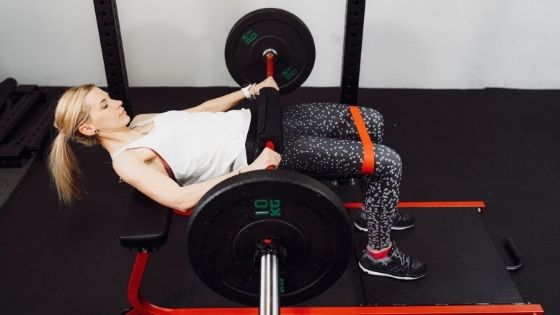
The barbell hip thrust is one of the best gluteus medius exercises. This exercise will help you to grow your butt muscles.
Use a barbell, lie on the ground, and put the weight on your hips. Push your hips upwards by contracting your butt muscles as hard as you can for two seconds, then release.
Do this 20 times every day, three sets each time with 1 minute between sets!
Side-lying hip abduction
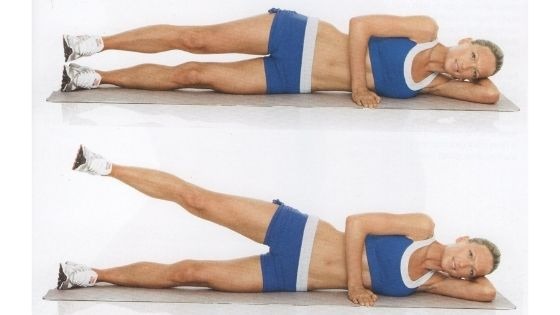
You should lie on your side and pull your leg up until it is in line with the other. Keep the other leg on the floor.
Then you push down on the raised portion while raising it upwards for a little bit. You then lower that leg back to its starting position and do this again for a total of 20 reps, three sets each time with one minute between sets!
Monster walks
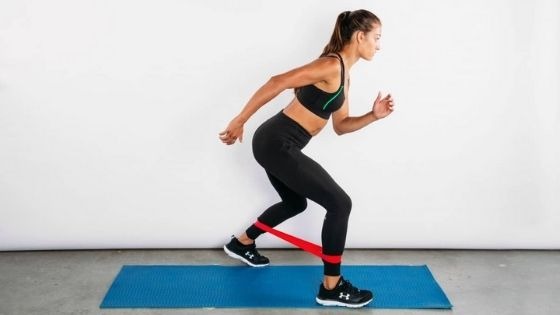
Monster walks are a great way to work your glutes. You start by standing up straight with your feet together.
Then, you walk on your tiptoes as far as you can to the front, back, and side of the room. Repeat this 10 to 20 times.
Lateral Band Walks
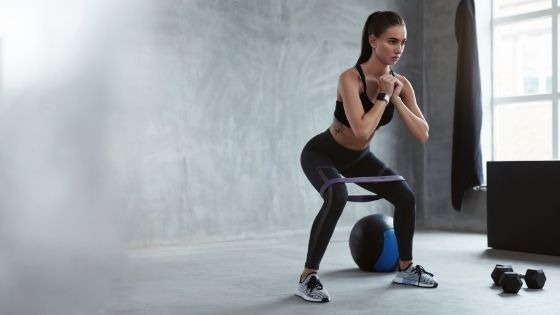
Lateral band walks are an excellent way to exercise your butt muscles. You start by standing up straight with your feet together.
Then, you walk on your tiptoes as far as you can to the side. Then you walk to the side where your feet are together. Repeat this 10 to 20 times.
Wall sit
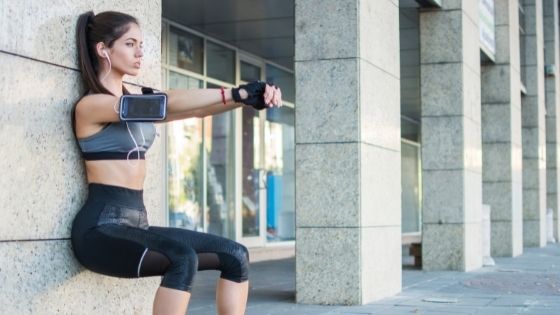
To do wall sits, you will need to sit with your back against the wall. You can use a chair if it is too hard to reach the border. Then, sit!
If you want, you can also put your hands on the ground to be in front of you for balance. Again, Wall sits easy, and they will help you work out your butt muscles!
Glute bridge
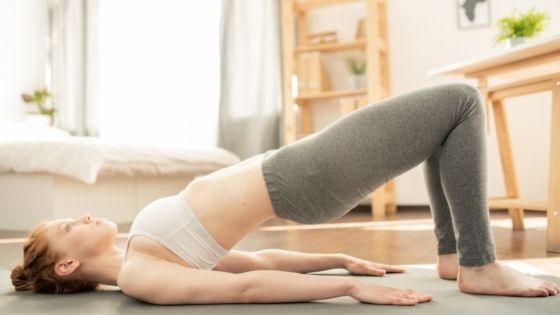
Start by lying on your back with your knees bent and feet flat on the ground to do a bridge. Your arms should be in a "T" shape in front of you.
Then, raise your hips, so they are lined up with your knees and shoulders. Then, hold this position for about 10-30 seconds before lowering yourself back down.
Reverse crossover lunge
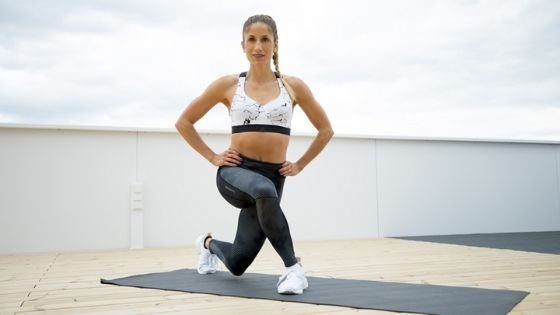
To make a reverse crossover lunge, you start by standing with your feet close together. Then, you move one leg forward and the other back.
You should lean your body over the front leg and keep your back straight.
Then, go back to the standing position and do this for 30 seconds or more. Reverse crossover lunge is a great exercise that will help you grow your butt muscles!
Gluteus medius exercises before and after
Working out your gluteus medius with these exercises will lift your leg higher and do other stuff better. That happens because exercising these muscles makes them more extensive and more robust.
"People who don't work their glutes properly will end up compensating with other muscles like the lower back or hamstrings." - Javier Machuca, PT.
The best time to work out your butt muscles is first thing in the morning, right after you wake up.
You should also do lower body workouts twice a week to make your butt muscles stronger! For example, you can do squats or lunges or even walk on tiptoes for 30 minutes every day.
Tips on how to avoid injury in your glutes and hips
The gluteus medius is a large muscle in the buttock which plays an essential role in moving the hip and leg.
It's easily strained, either by overuse (involved in running) or by direct trauma to the upper outer buttock region. I can't emphasize enough how much this little muscle can hurt.
The gluteus medius is just below the iliac crest (hip bone) and lateral to the gluteus maximus, making it easy to find by hand or probe with a finger from behind.
It's about one-quarter inch thick, roughly flat, and triangular. The muscle fibers grow at an angle, performing as a hip abductor (a movement that draws the leg away from the midline) and as an external rotator.
To avoid injuries in your glutes, you should:
Learn to judge what is safe and what is not
When it comes to feeling uncomfortable or noticing symptoms about your gluteus medius muscle, you should start with knowing what's safe and what's not. First, you need to be aware of symptoms.
If you feel a shooting pain in your buttock or upper thigh, if you can't fully extend the hip (straighten it), or there's a sharp pain that makes you wince when you flex or move your leg away from the midline, then you need to see your health care provider.
If you're not sure what you should do or how to do it, ask your health care provider or physical therapist.
Perform your exercises correctly.
I've found that the people who are most susceptible to gluteus medius injury are those who either don't know what they're doing or do it wrong on purpose because they love heavyweights and have an attitude of "no pain no gain."
If you're not sure what you should do or how to do it, ask your health care provider or physical therapist.
Perform the exercises at least two times per week for best results
It can take several weeks to strengthen this muscle and get it up to speed. If you only give the muscle one session a week, don't expect much.
Perform the exercises slowly and deliberately.
Fast reps put a lot of strain on a muscle that's not strong yet, which can lead to injury. So if you're trying to develop strength, keep the speed below eight seconds up.
And also four seconds down for each phase of the exercise.
Keep your abs tight
It may seem like a bit of an oxymoron, but if you do your exercises correctly and try to resist using momentum or "bouncing" when performing the movements, you'll be OK.
Use good form
Here's an example: to abduct (move away from the midline) your hip and leg properly, not arch your back.
The action of your back may take your hip out of the way, but it's not good for you and puts a lot of strain on your lower back as well.
Keep your hips level.
One way to do this is to line up one foot so that its toe points at the same spot on the wall all the time when you do one leg at a time. It doesn't have to be perfectly centered, just in the ballpark.
When you do both legs together, keeping your hips level becomes more challenging because it's challenging to keep both feet pointed in the same general direction when they are side by side or close together.
Don't neglect unipodal movements.
If you're into bicycling or any stationary activity that gives you a workout, tries to work the unipodal version of this too… one leg at a time—this way, your body learns how to move equally on both sides.
I hope this helps optimize your training so you can avoid injury!
Frequently Asked Questions
What exercise works the gluteus medius?
The glutes (specifically the gluteus maximus) extend down from your pelvic bone and should fill out the hips below them.
Strengthening your hamstrings and butts will help increase the curvature in a natural position to a more shapely angle. One effective exercise is called a "glute bridge," which strengthens the glutes and hips.
How do I know if my gluteus medius is weak?
The gluteus medius is one of the four muscles that control the position of your hips. Its job is to keep your hips level while you walk, run, or ascend/descend stairs.
A weak right GLUTEUS MEDIUS will cause the left hip to drop when striding forward with the right foot ahead.
It's also partially responsible for rotating your body so that it revolves more side-to-side than front-to-back.
Weakness in this muscle can lead to pain on the outside of your left hip, anterior cruciate ligament rupture, ankle injuries, and knee problems.
How do I isolate my gluteus medius?
A simple but effective exercise is to lie flat on your back with a leg straight and the other bent.
Contract the gluteus medius of the straight leg, or lift that foot. Then do the same for the opposite side.
It takes about 10 seconds for each set of contractions per leg. So three sets of contractions per day are enough to do wonders!
Why is gluteus medius weak?
The weak gluteus medius muscles are because people don't typically use them as much as the other muscles, especially those who lead a relatively sedentary lifestyle.
We recommend people to exercise their hip flexors by having a daily routine of stepping up on a chair with one leg at a time or sitting with the knee elevated for 5 minutes twice during the day.
That can be enough to improve or maintain range of motion in this area over time.
Conclusion
People in the past said that squats and other exercises were terrible for their bodies. However, recent research reveals this is not true at all!
Gluteus medius exercises are great for your body and help with back pain by strengthening the hips and buttocks.
If you want to strengthen these essential muscle groups without getting injured or to feel sore afterward, try out one of these four glutes-focused workouts today!
You'll feel excellent tomorrow morning when it's time to get up from bed - guaranteed!
Medically reviewed and approved by Nataniel Josue M D.
